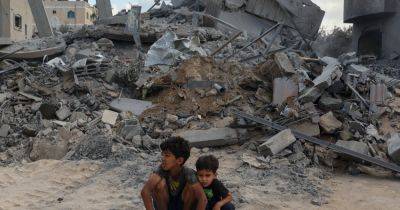Golan Heights strike may ignite full Israel-Hezbollah war
A missile strike that killed 12 children playing soccer in the Israeli-occupied Golan Heights on July 27, 2024, has prompted international concern that the Middle East conflict could expand into the disputed territory.
Israel has blamed the Lebanese militant group Hezbollah, and it has already conducted retaliatory strikes, with more expected.
To explain the importance of the Golan Heights and what the latest strike could indicate, The Conversation turned to Mireille Rebeiz, a scholar of Lebanese studies and chair of Middle East Studies at Dickinson College.
What is the Golan Heights?
Located in southwestern Syria, the Golan Heights is 1,200 square kilometers (460 square miles) of mainly stony hills that overlook Syria, Lebanon and Jordan.
Today, over 40,000 people live there. More than half are Arab Druze, including the community in the small town of Majdal Shams – the site of the recent attack. Many of them identify as Syrian citizens and refuse to accept Israeli citizenship. The rest are Jewish settlers, most of whom arrived in the territory after it was occupied by Israel more than half a century ago.
Can you walk us through the history of this occupation?
In June 1967, after the Six-Day War between Israel and three of its Arab neighbors – Syria, Egypt and Jordan – the Golan Heights fell under Israeli occupation, along with East Jerusalem, the West Bank, the Gaza Strip and the Sinai Peninsula.
This prompted the United Nations Security Council to adopt Resolution 242, which called for Israel’s withdrawal from all of those occupied territories. It also called for the “termination of all claims and states of belligerency and respect for and acknowledgment of the sovereignty, territorial integrity and political







